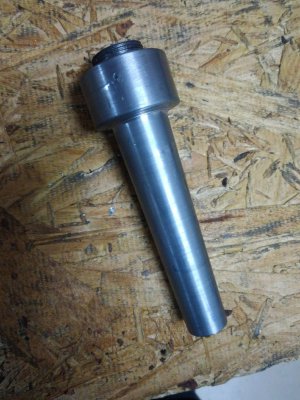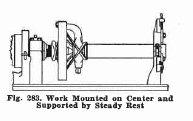- Joined
- Aug 13, 2020
- Messages
- 1,342
I bought a boring head without an MT3 adapter to use on the lathe or mill. So, I made one last night. After turning the 7/8-20 threads to a tight fit on the boring head, I mounted it between centers. First though, I mounted an MT3 taper reamer between the centers, and used the tailstock lateral adjustment to remove the longitudinal run-out on one face of the reamer. This was the first time I'd ever cut a taper. Colored the shank with a sharpie and tested the fit on the lathe by pushing it in. After using the dead blow hammer to get it out, the tells on the sharpie mark showed it was a perfect fit all the way down.
Attachments
Last edited:



